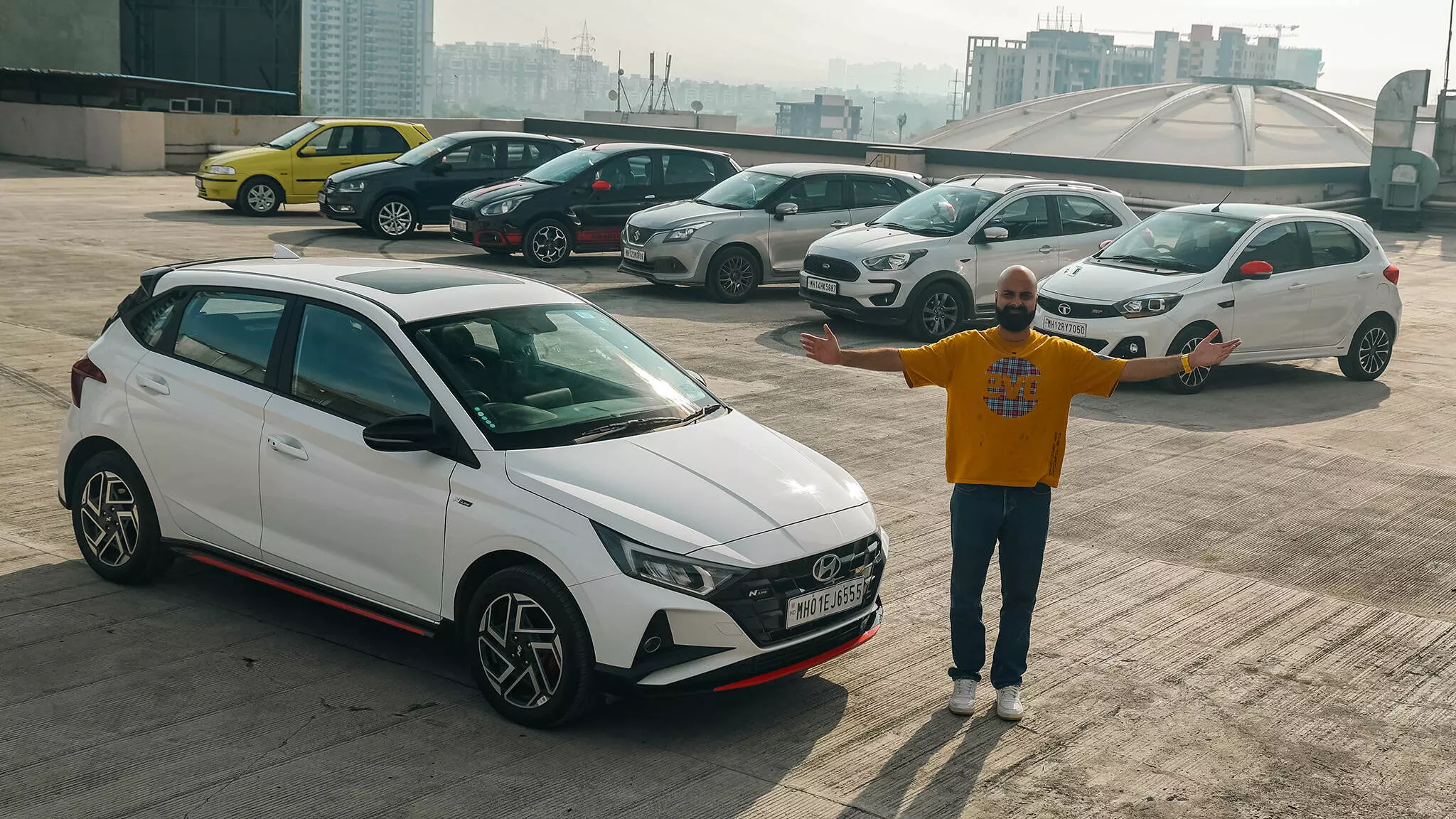
Car Features
Hyundai i20 N Line warm hatch special: The last of the warm hatches in India
What happened to the affordable enthusiast car, wonders Aatish
What has happened to the affordable enthusiast car in India? They have all but disappeared. Just look back to the last decade. We had a slew of ‘warm hatches’ available for the enthusiast. Today, just one. The i20 N Line.
You can also watch our warm hatch special Youtube video here.
First, let’s first understand the warm hatch phenomenon. Warm, because you can’t call them hot. A modern hot hatch would have 180+ horsepower, a limited slip differential, and a genuinely sporty chassis. We’ve gotten a few of those. The Polo GTI comes to mind. The Mini Cooper S JCW has flirted with our market. The Golf GTI has just made an entry. That mental A 45 S has been around for a while. The issue is, hot hatches are supposed to democratise performance but none of these cars ever did that. Indian taxes and duties meant they are prohibitively expensive.
Golf GTI is an example of a genuine hot hatch. -Shot by Avdhoot A Kolhe for Evo India
Which is where the warm hatch comes in. It is a uniquely India phenomenon — they’re regular family hatchbacks with slight more punchy turbocharged engines, cool styling and occasionally a retuned chassis. These cars are based off made-in-India cars and while priced at a premium to their more generic siblings, they offer more by way of performance and thrills. They aren’t blue-blooded hot hatches, but they do the same job of democratising thrills in India. Ergo Warm Hatches.
We’ve had a few. I’d say it started with the Palio GTX / S10. The 16V engine made 99bhp, and while a 12-second 0-100kmph time doesn’t sound like much today, back in 2001? It was a very big deal. It was a whole decade later that the Polo GT came around in 2013. The first of this truly modern lot of warm hatches. It debuted the 1.2 TSI engine and DSG gearbox — stuff we’d never seen in a small car before. It stayed alive the longest too, with the 1.2 TSI being replaced by a 1-litre TSI and then finally being discontinued in 2022. The Abarth Punto arrived in 2015 and was the warmest of the warm hatches. A strong 1.4-litre T-Jet engine that made 143bhp and 211Nm of torque — way faster than anything else we had at this price point. Maruti tried their hands at it. The Baleno RS from 2017 made a whole 100.5bhp but was also significantly lighter than the Abarth and Polo. Ford was probably the king of handling with the Figo S. Tata Motors tried to have a go at the segment with the Tiago JTP. And last but not the least, the Hyundai i20 N Line came our way.
The i20 N Line stands in a class of one today. To be fair, it would hold its own against the lot that preceded it rather well. Cool exteriors with red accents and a naughty looking (and sounding) exhaust. A sporty steering wheel with big paddles. A nice GDI engine with a DCT transmission, plus the option of a manual if you’re a true blue enthu. And most importantly, a chassis and steering that has been retuned.
Hyundai i20 N Line is the last of the warm hatches. -Shot by Avdhoot A Kolhe For Evo India
The hatchback has warped in to something entirely new in the last few years — the compact SUV. These jacked up hatchbacks have more ground clearance which are more suited to our broken road conditions. They have more upright driving positions, which give drivers better visibility and sense that they are safer on the roads. Plus, they look more imposing with better road presence — so much about owning a car is about flexing. Compact SUVs tick all those boxes. Premium hatchback buyers have moved over to compact SUVs. They work for manufacturers too, since the margins they can command on an SUV are higher than on a hatchback. SUVs drive sales and profitability.
Today, you can get a fair few enthusiastic compact SUVs. The Skoda Kylaq comes to mind. Hyundai does a Venue N Line. Mahindra has the 3X0 with its lovely GDI engine. The Fronx blurs the lines between compact SUV and hatch. They all have the punchy performance that warm hatches had, but in a completely different package. Love ‘em, hate ‘em, there’s no ignoring them.
Maruti could plonk their 1-litre Boosterjet engine in a Swift ‘Sport-Line.'
It isn’t all doom and gloom, though. There are some glimmers of hope on the horizon. Now that Maruti makes the 1-litre Boosterjet in India, can they shove it in the Swift and give us a Swift… err Sportline? Or can Tata put the 1.2 GDI engine in to the Altroz to give us an actual Altroz Racer? We’d like to dream. But until then, the i20 N Line continues to hold fort for the warm hatch. It is sporty, it looks cool, it puts a smile on your face and it won’t break the bank. Hyundai has really done a superb job of it and as of 2025, it remains the last of its kind.


